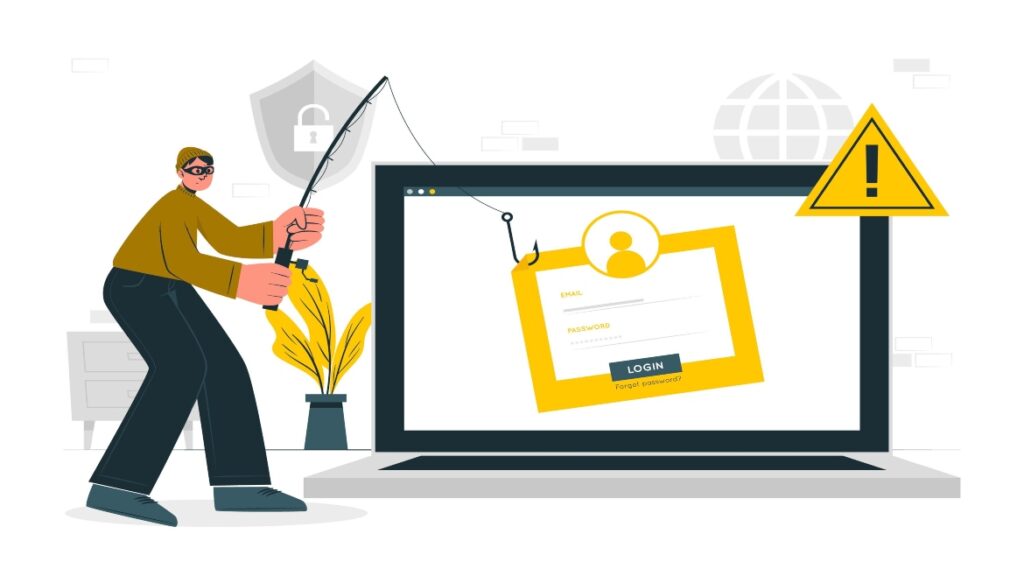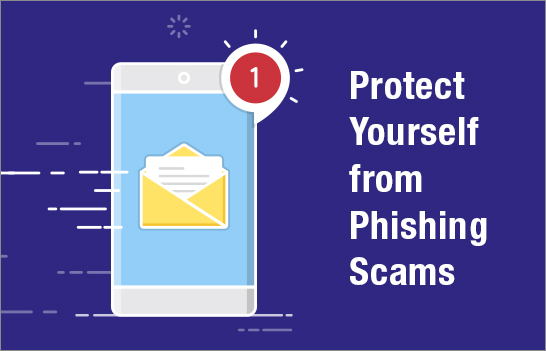In today’s digital age, it is crucial to be vigilant against various online threats, including phishing attack scams. Phishing attacks have become increasingly prevalent and sophisticated, posing significant risks to individuals and organizations alike. In this article, we will explore what phishing attack scams are, how they work, the common types of phishing attacks, signs to watch out for, the consequences of falling victim to these scams, and effective preventive measures to safeguard yourself from such threats.
Contents
What is Phishing Attack Scam?

With the rapid advancement of technology, our lives have become more interconnected and reliant on the internet. While this offers numerous benefits, it also exposes us to certain vulnerabilities. Phishing attack scams have emerged as a major concern, targeting individuals, businesses, and even government institutions. Understanding how these scams operate and learning how to protect yourself is essential in today’s digital landscape.
Phishing attack scams refer to fraudulent attempts to deceive individuals into sharing sensitive information, such as passwords, credit card details, or social security numbers. Cybercriminals typically masquerade as trustworthy entities, such as banks, popular websites, or well-known companies, to trick their targets. By manipulating human psychology and exploiting security vulnerabilities, these scammers aim to gain unauthorized access to personal data or carry out financial fraud.
How Do Phishing Attacks Work?
Phishing attacks involve a combination of technical and psychological tactics to deceive their victims. Let’s take a closer look at the two primary methods used in these scams:
Crafting Fake Emails and Websites
One common technique used in phishing attacks is the creation of deceptive emails and websites that mimic legitimate ones. These emails often appear authentic, featuring logos, branding, and similar email addresses to those used by reputable organizations. The scammers craft persuasive messages, urging recipients to take immediate action, such as clicking on a link, providing personal information, or downloading an attachment. These emails are designed to instill a sense of urgency or fear, making individuals more likely to fall into the trap.
Social Engineering Techniques
Phishing attackers also rely on social engineering techniques to manipulate their victims. They exploit human emotions and psychological triggers to persuade individuals into divulging confidential information. This can include tactics like creating a sense of trust, pretending to be a colleague or friend, or using authority to coerce individuals into sharing sensitive data. By capitalizing on natural human tendencies, such as curiosity or a desire to help others, scammers exploit the inherent trust people place in online communications.
Common Types of Phishing Attacks

Phishing attacks come in various forms, each with its specific approach. Here are some of the most prevalent types of phishing attacks:
Email Phishing
Email phishing is the most common form of phishing attack. Attackers send fraudulent emails that appear to be from reputable sources, such as banks or well-known companies. These emails often include alarming messages, urging recipients to click on a link and provide their personal information. The links lead to fake websites designed to collect sensitive data, which can then be used for identity theft or financial fraud.
Spear Phishing
Spear phishing attacks are more targeted and personalized compared to generic email phishing. The attackers conduct detailed research on their victims, gathering information from social media profiles or other online sources. They then create customized emails that appear highly credible and relevant to the recipient, increasing the likelihood of falling for the scam. Spear phishing attacks often target specific individuals within organizations, aiming to gain access to confidential data or compromise internal systems.
Smishing and Vishing
Smishing (SMS phishing) and vishing (voice phishing) are phishing techniques that exploit mobile devices. Also, smishing involves sending fraudulent text messages containing deceptive links or requests for personal information. Vishing, on the other hand, utilizes voice calls to trick individuals into revealing sensitive data. These attacks prey on the trust people have in their mobile devices and can be particularly effective due to the immediacy of text messages and voice interactions.
Signs of a Phishing Attack
Being able to recognize the signs of a phishing attack is crucial in protecting yourself against online fraud. Here are some common indicators that should raise suspicion:
Suspicious Emails and Links
Pay close attention to the sender’s email address and the content of the email itself. Check for any grammatical errors, unusual requests for personal information, or discrepancies in branding. Hover over links before clicking on them to reveal their actual destination. If the URL looks suspicious or unrelated to the purported sender, it may be a phishing attempt.
Requests for Personal Information
Legitimate organizations rarely request sensitive information, such as passwords or social security numbers, via email. Be cautious if an email or website asks for such details. Trusted entities typically have secure channels for handling confidential information and would not ask you to provide it through email or unfamiliar websites.
Urgency and Threats
Phishing attackers often create a sense of urgency or fear to prompt immediate action. They may use threats of account suspension, financial loss, or legal consequences to pressure individuals into divulging information. Beware of emails that instill panic or urgency, as this is a common tactic used by scammers.
Consequences of Falling Victim to Phishing Attacks

The consequences of falling victim to a phishing attack can be severe. Here are some potential risks:
- Financial Loss: Phishing scammers may gain access to your bank accounts, credit card information, or other financial data, resulting in unauthorized transactions or identity theft.
- Identity Theft: By tricking you into sharing personal information, attackers can assume your identity and carry out fraudulent activities on your behalf, damaging your reputation and causing long-lasting consequences.
- Data Breaches: If you’re targeted as part of a spear phishing attack within an organization, the attacker may gain access to sensitive company data, jeopardizing confidential information and potentially leading to financial or legal repercussions.
- Compromised Accounts: Falling for a phishing scam can result in your email, social media, or other online accounts being compromised, allowing attackers to impersonate you, send malicious messages, or access additional personal information.
Preventing Phishing Attacks
Protecting yourself from phishing attacks requires a proactive approach. Here are some effective preventive measures:
Strengthening Passwords
Creating strong, unique passwords is essential in preventing unauthorized access to your accounts. Use a combination of uppercase and lowercase letters, numbers, and special characters. Avoid using easily guessable information, such as your name or birthdate, and consider using a password manager to securely store and generate complex passwords.
Being Wary of Suspicious Emails
Exercise caution when dealing with emails, especially those from unfamiliar senders or with unexpected attachments or links. Don’t click on suspicious links or download attachments unless you are confident about their legitimacy. Verify the authenticity of the email by contacting the purported sender through a trusted communication channel.
Two-Factor Authentication
Enable two-factor authentication (2FA) whenever possible. This adds an extra layer of security to your accounts by requiring a second form of verification, such as a unique code sent to your mobile device, in addition to your password. Even if your password is compromised, the attacker would still need additional verification to gain access.
Regular Software Updates
Keep your operating system, web browsers, and antivirus software up to date. Software updates often include security patches that address vulnerabilities exploited by phishing attacks. Regularly check for updates and enable automatic updates whenever possible to ensure you have the latest security measures in place.
Reporting Phishing Attacks

Reporting phishing attacks is crucial to combatting online fraud and protecting others from falling victim to similar scams. If you encounter a phishing email, website, or suspicious activity, take the following steps:
- Report to the organization: If the phishing attack targets a specific organization or brand, report it to their dedicated security team or customer support. They can take action to investigate and prevent further scams.
- Forward the email: Forward the phishing email to the Anti-Phishing Working Group at [email protected]. This organization works to combat phishing attacks and can assist in taking down fraudulent websites.
- Report to authorities: If you have suffered financial loss or believe you have encountered a serious phishing scam, report it to your local law enforcement agency or cybercrime unit. They can investigate the incident and potentially take legal action against the perpetrators.
Conclusion
Phishing attack scams pose a significant threat in the digital landscape, targeting individuals, organizations, and their valuable data. By understanding how phishing attacks work, recognizing the signs, and implementing preventive measures, you can protect yourself from falling victim to these scams. Stay vigilant, be cautious when dealing with emails and websites, and report any suspicious activity to help create a safer online environment for everyone.
If you are looking to implement any of the Infosec compliance frameworks such as SOC 2 compliance, HIPAA, ISO 27001, and GDPR compliance, Impanix can help. Book a Free consultation call with our experts or email us at [email protected] for inquiries.
